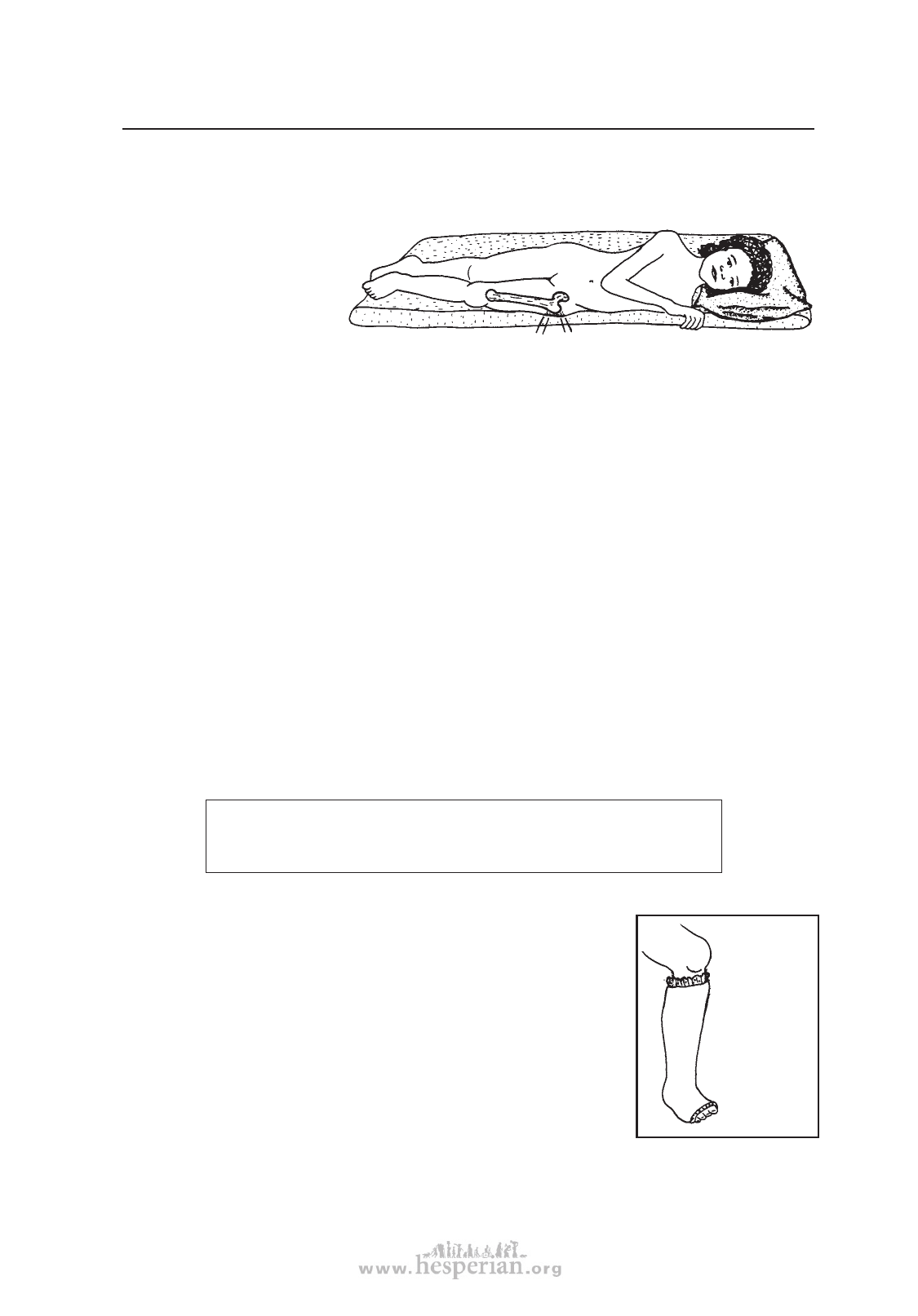
Pressure Sores
24CHAPTER
195
WHAT ARE THEY?
Pressure sores, or ‘bed
sores’, are sores that form
over bony parts of the
body when a person lies
or sits on that part of the
body for too long without
This is a common pressure sore point—over the top of the thigh bone.
moving. Where the skin
is pressed against the bed or chair, the blood vessels are squeezed shut so that the
blood cannot bring air to the skin and flesh. If too much time passes without moving
or rolling over, the skin and flesh in that spot can be injured or die. First a red or dark
patch appears. And if the pressure continues, an open sore can form. The sore may
start on the skin and work in. Or it may start in deep near the bone and gradually work
its way to the surface.
Who is likely to get pressure sores?
When a normal healthy person lies or sits in one position for a long time, it begins
to feel uncomfortable, or to hurt. So she moves or rolls over, and pressure sores are
avoided. People most likely to get pressure sores are:
1. persons who are so ill, weak, or disabled that they cannot roll over by themselves.
This includes persons severely disabled from polio, brain damage, advanced
muscular dystrophy, or a bad injury.
2. persons who have no feeling in parts of their body, who do not feel the warnings
of pain or discomfort when their body is being damaged. This includes persons
with spinal cord injury, spina bifida, and leprosy.
WARNING: Because persons with spinal cord injury are at first
unable to turn over, and also have lost the ability to feel in parts
of their bodies, they are at very high risk for pressure sores.
3. persons who have a plaster cast on an arm
or leg (to correct a contracture or to heal a
broken bone), when the plaster presses over
a bony spot. At first the pressure will hurt and
the child may cry or complain. But in time
the spot will grow numb and the child will
stop complaining—although a sore may
be forming.
The risk is greater when using casts on
children who have no feeling in their feet.
On these children, even a corrective shoe
or brace can easily cause a pressure
sore—unless great care is taken.
Casts to
straighten
contractures
and clubbed
feet must be
very well
padded over
bony places
to prevent
pressure
sores.